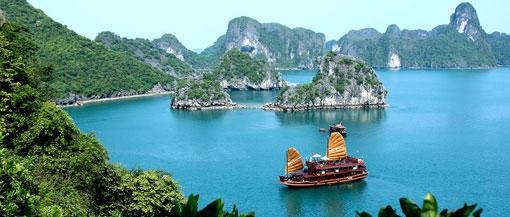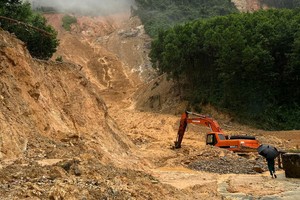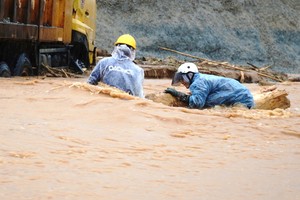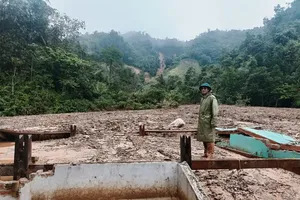Ha Long Bay in the northern province of Quang Ninh has been named one of the world’s new seven wonders of nature, according to a global poll announced this morning by the New 7 Wonders Foundation.
New Open World Corporation, an associate of New 7 Wonders Foundation made the announcement at 2:00am Vietnamese time today, November 12. The list includes (in alphabetical order), the Amazon rainforest in South America, Vietnam’s Ha Long Bay, the Iguazu waterfall of Argentina and Brazil, South Korea’s Jeju Island, Indonesia’s Komodo Island, Puerto Princesca Underground River in the Philippines and the Table Mountain in South Africa.
The list was made based on the provisional voting results for a total 400 wonders from more than 200 countries and territories that ended at 11:11pm on November 11.
Final results will be officially announced early next year, said the Swiss foundation, warning however that there may yet be changes between the provisional winners and the final list.
Earlier on September 27, Ha Long Bay was placed amongst 28 finalists.
That Ha Long Bay was chosen will in itself boost the image of Vietnam and the confidence of the people of Vietnam. It certainly is a moment of great pride for the citizens of Vietnam. It will provide a new opportunity of Vietnam to advertise the image and people of Vietnam to the world and promote investment, tourism…from international community to Vietnam. 
Ha Long Bay, situated in the Gulf of Tonkin, includes some 1600 islands and islets forming a spectacular seascape of limestone pillars. Because of their precipitous nature, most of the islands are uninhabited and relatively unaffected by human influence.
The geomorphology of Ha Long Bay is known as a drowned karst landscape due to the exceptional combination of its limestone karst features which have been subject to repeated regression and transgression of the sea over time. The limestones of Ha Long Bay have been eroded into a mature landscape of fengcong (clusters of conical peaks) and fenglin (isolated tower features) karst features, modified by sea invasion in later years.
Marine invasion of Ha Long Bay has added an extra element to the normal process of lateral undercutting of the limestone towers and islands. The most conspicuous feature being the main notch cut into the entire rocky coastline. Notches are a feature of limestone cliffs worldwide, but those of Ha Long Bay are exceptionally well developed and, at many sites, extend into arches and caves. This process of undercutting and subsequent erosion maintains the steep faces of the fenglin karst towers and thereby perpetuates the spectacular nature of the landscape.
A distinctive feature of Ha Long Bay is the abundance of lakes within the larger limestone islands.
Extensive limestone caves represent another important feature of Ha Long Bay, with three main types able to be identified: old phreatic caves formed below the water table of the time; old karstic foot caves formed by lateral undercutting of cliffs at base level; and marine notch caves formed at sea level where rock structures are powerfully eroded and eventually reduced to a wave cut platform.
To summarize, Ha Long Bay possesses a tremendous diversity of caves and other landforms which derive from the unusual geo-morphological process of marine invaded tower karst. These areas provide a unique and extensive reservoir of data for the future understanding of geo-climatic history and the nature of karst processes in a complex environment.
Source UNESCO
























